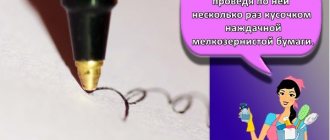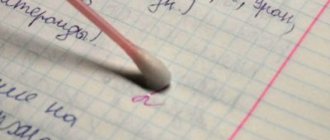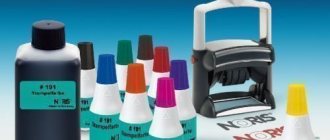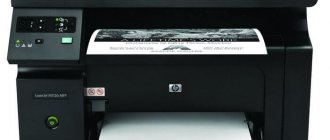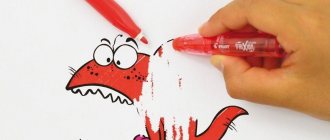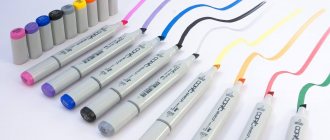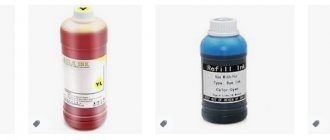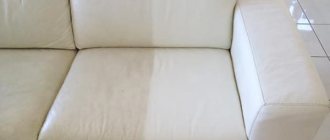How to erase ink from paper without leaving a trace
How to erase ink from paper In modern times, in social and public life, a lot of paper is wasted. Filling out forms and drawing up contracts requires a high degree of knowledge of language norms. As a rule, work with documentation is carried out in a fast manner, so even the most intelligent spelling and punctuation expert can make inaccuracies. In a panic, many questions arise: how to remove ink from paper without being noticed?
LiveInternetLiveInternet
—Search by diary
—Subscription by e-mail
—Categories
- My works and photographs (67)
- HOME AND FAMILY (998)
- Children are our happiness (114)
- Useful tips (42)
- Family relationships (37)
- For children, crafts with children (184)
- home economics (326)
- travel (180)
- feng shui, psychology, esoterics (115)
- All about beauty and health (887)
- for weight loss, diet (89)
- Perfumes, aromas (16)
- health, traditional medicine (369)
- beauty recipes for the face (196)
- hair care (84)
- hand and foot care (95)
- FOR THE HOME – handmade (2543)
- lampshades, night lights, lamps (125)
- Vases, flowerpots, baskets (240)
- wreaths (182)
- interior design (325)
- cardboard furniture (30)
- DIY furniture (152)
- Miniatures (20)
- mosaic (66)
- panels, frames, mirrors (252)
- crafts, interior decoration (557)
- bedspreads, curtains, rugs (379)
- repairs, interior decoration (55)
- DIY CANDLES. Decor (56)
- DIY topiary (132)
- Floristry (105)
- Fashion and style (364)
- FOR THE COTTAGE AND GARDEN handmade (381)
- Wooden furniture and buildings (79)
- indoor, garden plants (95)
- Garden figurines and sculptures (64)
- construction at the dacha (53)
- handmade for Garden and Cottage (97)
- HANDMADE from simple materials (1169)
- HANDMADE FROM CARDBOARD (227)
- from waste material (260)
- from branches, snags, birch bark (90)
- from wine corks (17)
- made of pebbles and stones (28)
- from coffee beans (75)
- from corn leaves, talasha (10)
- from light bulbs (17)
- made of lightning (27)
- from sticks, honey spatulas (42)
- from food products (56)
- from plastic bottles (110)
- from natural materials (102)
- button (28)
- from shells and corals (21)
- from pumpkin and seeds (17)
- from cones and acorns (44)
- from egg trays (32)
- nuts, seeds and pistachios (18)
- PAPER HANDMADE (1026)
- corrugated paper, napkins (85)
- boxes, baskets, panels (219)
- coffee filters (17)
- sheet music, book pages (112)
- origami, kusudama, quilling (177)
- papier mache (108)
- Paper Art (8)
- scrapbooking, pergamono (110)
- Paper FLOWERS (289)
- Flowers made of corrugated and crepe paper (120)
- VINTAGE (611)
- vintage pictures, prints (54)
- Vintage hand-made (318)
- burlap, jute, twine (261)
- prints on furniture, pillows (58)
- shabby chic / Shabby chic (49)
- EMBROIDERY (703)
- embroidery with beads, sequins (11)
- satin stitch embroidery, cutwork (65)
- children's embroidery (65)
- carpet embroidery (50)
- cross stitch, patterns (407)
- ribbon embroidery (76)
- 3D embroidery (22)
- plastic canvas (20)
- Useful tools for embroidery (42)
- KNITTING (2808)
- vases, baskets, sachets (76)
- knitting for children (220)
- knitting for men (46)
- knitting from bags (21)
- knitting. toys (246)
- knitted items, crafts (213)
- knitted jewelry, accessories (124)
- jackets, cardigans, vests (261)
- magazines, books on knitting (46)
- crochet rugs, ottomans (133)
- blouses, pullovers, jumpers (232)
- socks, slippers, knitted shoes (77)
- dresses, tunics, coats (139)
- Blankets, pillows, bedspreads (191)
- napkins, cup holders (152)
- Crochet tablecloths, curtains (46)
- bags, wallets, cosmetic bags (186)
- tops, sundresses, swimsuits (115)
- patterns, equipment, usefulness (177)
- sirloin, combined (45)
- crocheted and knitted flowers (148)
- Hats, shawls, scarves, snoods (207)
- skirts, shorts, trousers (48)
- DECOUPAGE (514)
- decoration (323)
- decoupage on fabric (34)
- volumetric decoupage (39)
- spot painting (12)
- stencils, templates, pictures (151)
- egg crackle (27)
- TOYS, DOLLS handmade (1028)
- Toys using the felting technique (38)
- toys, felt crafts (159)
- coffee toys, crafts (71)
- dolls made of nylon, from socks (107)
- textile dolls, Tilda (183)
- soft, textile toys (284)
- Christmas toys (36)
- Crafts, toys for children (207)
- COOKING recipes (1544)
- chicken dishes (49)
- fish dishes (45)
- in a slow cooker and microwave (29)
- preserves, jams (37)
- sweet pastries (187)
- Georgian, Caucasian cuisine (124)
- roast (42)
- appetizer, main courses (120)
- from zucchini, eggplant (64)
- carving (31)
- candies, cookies, desserts (97)
- culinary benefits (155)
- meat dishes (37)
- drinks (55)
- pies, pasties, pancakes (54)
- pizza, pies, khachapuri (140)
- salad recipes with photos (148)
- pickles, preparations for the winter (105)
- soups, liquid dishes (41)
- cakes (107)
- fruit cakes (51)
- decoration of cakes, salads (81)
- MOLDING (710)
- gypsum, clay (58)
- marzipan, mastic (145)
- plastic, polymer clay (299)
- salt dough (189)
- cold porcelain (209)
- MASTER CLASS / Tutorial (5216)
- NEWSPAPER WEAVING (719)
- Weaving from newspapers. MK (650)
- newspaper weaving ideas (72)
- HOLIDAYS, crafts and gifts (1964)
- Bouquets and gifts made of sweets (70)
- paper in gift decoration (90)
- unusual gifts (74)
- New Year, Christmas (862)
- Handmade cards (37)
- Easter (411)
- Gifts for lovers (167)
- Gifts for women (99)
- Gifts for men (23)
- wedding (150)
- Halloween - Halloween (92)
- NEEDLEWORK. TECHNIQUES (1661)
- Accessories, handmade jewelry (474)
- various techniques (15)
- felting (28)
- decor items (383)
- decor, shoe decoration (19)
- decorative bottles (84)
- leather (60)
- kinusaiga, patchwork without needle (33)
- books, magazines on needlework (82)
- DIY SOAP. Decor (22)
- drawing (31)
- fabric painting (29)
- painting objects (119)
- nylon flowers (22)
- flowers made from ribbons, flowers made from fabric (480)
- Techniques: WEAVING (288)
- beading. decorations (94)
- Tapestry, Isothread, Tenerife (26)
- macrame, tatting (73)
- beaded flowers and trees (84)
- UTILITIES (224)
- make money on the Internet (53)
- diary pictures (25)
- Liru (80)
- useful programs, links (94)
- WordPress site (3)
- SEWING (1647)
- Denim ideas (111)
- Pincushions (76)
- From T-shirts (55)
- baskets, plates, vases (98)
- shoes, slippers (79)
- clothing alterations (187)
- pillows, pillowcases, ottomans (173)
- sewing utilities (79)
- patchwork, patchwork (331)
- bags, wallets, cosmetic bags (304)
- sewing for children (188)
- sewing for animals (24)
- sewing. skirts (22)
- we sew ourselves (502)
- This is interesting (1023)
- cars (25)
- for the soul, prayers (7)
- online stores (289)
- beautiful photographs, pictures, paintings (56)
- incredible but true (9)
- useful services, websites (492)
- jokes (68)
- I. Miscellaneous (93)
- videos, clips, music, films (79)
- Songs for the soul (30)
- Wants and wishes (7)
— Regular readers
-Statistics
How to remove ink from paper
More advanced in the question of how to remove ink from paper are students and schoolchildren. They know exactly a large number of options for how to remove pen ink from paper. If such an oversight occurred in lecture notebooks, then a regular proofreader can remove the ballpoint ink from the paper. Putty is not always suitable for schoolchildren, so other effective means are used.
Acetone
Students at school mostly write in blue ink, which can be easily removed with acetone (nail polish remover). You can remove ballpoint ink from paper using cotton wool wrapped around a stick or match. Next, dip it in acetone liquid and wipe the required text.
Removing ink using improvised means
If you need to decide how to effectively mix ink to correct a mistake, there is no need to rush. In this case, you can prepare well and buy the necessary product. But if ink accidentally gets on a serious document, you often need to act quickly.
- In this case, you can use a medical plaster. It can remove a fresh stain, but is only applicable on thick paper.
- If trouble happens at home, yogurt, toothpaste, and soda are used. To remove the letters of curdled milk, carefully trace the contours with a thin brush or cotton swab dipped in a dairy product. When the curdled milk dries, the inscription will disappear.
- Shaving foam has a similar effect. It removes ink well and leaves no marks. However, it cannot be replaced with gel or liquid soap.
- In an office setting, blots have to be cut off with a safety razor blade. This process requires jewelry precision and dexterity.
Rate this post
How to erase pen ink from paper with alcohol
The tumbler is soaked in alcohol for five minutes. Before applying alcohol, be sure to separate the damaged area from the good part with clean sheets. Remember! Medical alcohol must be without additives.
The mistake in students' notebooks is not so significant and tragic. But for adults, solving the problem of how to remove ink from paper is not always solvable. And if this happened on important documentation, then you simply cannot do without knowledge of how to remove ink from paper without spoiling it, saving yourself from repeated rewriting.
There are quite a few options for removing ink from paper without leaving a trace. However, there is an opinion that achieving this is simply unrealistic. This is due to incorrectly selected methods, which not only fail to remove ballpoint ink from paper, but also worsen the situation.
What should you not do and why?
Actions that should not be taken:
you cannot rub the paper from side to side - the material is very thin, so active mechanical action will lead to its damage;- Do not treat the document with gasoline or other greasy compounds - after using them, a stain will remain on the paper, which will be difficult to deal with;
- You should not start reprocessing if the paper is not dry - applying liquid to a wet surface will cause it to become wet and damaged.
Removing ink from the surface of the paper without a trace
How to erase ink from paper
In the office, when you don’t have a sufficient selection of suitable devices at hand, you can remove ink from paper without spoiling it with hydrogen peroxide. The percentage of the drug varies, so a twenty percent solution is suitable for getting rid of ink. It is necessary to stock up on cotton swabs, with which hydrogen peroxide will be applied to the surface of the parchment. In this case, you will have to blot the damaged text several times until the liquid dye disappears.
At work, you often have to use seals that confirm the authenticity of a document. Unfortunately, stamps are not always of good quality. Therefore, the print may spread and leave unnecessary marks. The following methods will tell you how to remove ink from paper.
Printer paint
Printer ink has a certain structure, due to which it is deeply absorbed into the paper surface, making it much more difficult to remove. (inkjet, laser) plays an important role
When an inkjet printer operates, ink splashes onto the paper; drying time depends on the model of the device and the type of ink; most often, the moisture remains for several minutes. Immediately after printing the text, the ink can be quickly collected with a cotton swab, which can greatly simplify the next step. When processing blots, care must be taken; failure to do so may result in the sheet being torn.
Inkjet printers most often use water-based ink, which can be gently scraped off with a razor or sandpaper. It is recommended to scrape towards yourself; the chances increase if you do it as quickly as possible after printing.
UV curing ink sticks to the surface instead of being absorbed, making it easier to scrape off. If all methods fail, it is recommended to use a stroke, over which you can write only after it has dried.
Laser printing is done by fusing ink into paper fibers, so the output ink is already dry. When removing paint from a laser printer, it is recommended to use acetone, which is carefully applied to the surface with a swab. It dissolves not only nail polish, but also printer ink, causing some of it to transform back into liquid. The method is not considered ideal, but it is the only one available. The paper changes color after the procedure, but newly written or typed text will be clearly visible. Due to the high flammability of acetone, it is recommended to keep it as far as possible from heat sources; if you experience signs of dizziness, you should immediately leave the room.
How to remove ink from paper at home
Home conditions provide more resources for using a variety of chemical elements to correct an unpleasant incident. And the question no longer arises: how can you remove ink from paper?
To prepare stain removers, you should prepare:
- vinegar;
- potassium permanganate;
- salt;
- soda;
- citric acid.
Acetic acid + potassium permanganate
It is impossible to remove ink from paper with potassium permanganate without the participation of additional elements. An excellent partner for it is seventy percent vinegar essence. To make the mixture you will need: a small pinch of manganese and a teaspoon of acetic acid. The two components are mixed. Using a cotton pad, a stick or a thin brush used when drawing, carefully remove erroneous places from the text.
Before starting work, you must place the damaged one on a clean sheet. A tuffer soaked in the “miracle” solution must be carried over the text until it completely disappears. A brown mark will appear in place of the output record, which can be removed with peroxide. The final step is a hot iron. We place the working parchment between a clean sheet and a cloth and iron it with an iron.
To help remove ink from paper from a pen: citric acid + salt + soda
To use the “magic” mixture, you will need:
- the same ratio of salt and soda;
- glass, with a hole cut to the size of the stain to be removed;
- concentrated citric acid;
- syringe with a thin needle.
Soda and salt are mixed and poured onto a flat surface. The worksheet is placed face down on the soda-salt composition. We press the paper with glass so that the hole corresponds to the unnecessary record, through which we slowly and carefully inject citric acid with a syringe. Salt and soda will instantly absorb the soluble ink and not a single trace will remain on the document.
Ink from stamps and seals
To remove stamp marks, it is recommended to use the following recipes :
- Take oxalic acid, citric acid and water in a ratio of 1:1:10, mix thoroughly, gently moisten the print with the resulting mixture using a brush, then moisten the area with water, and dry with a blotter.
- salt, hydrochloric acid and water in a ratio of 1:1:3, apply the mixture as described above.
- At the first stage, it is necessary to remove the first layer with a swab soaked in an alcohol solution , after which the manipulations described in the first paragraph are repeated.
- Sodium sulfite or a substance that contains SO3 is dissolved in water, the gas obtained as a result of the reaction returns the paper to its original appearance.
- To remove brand stamps, it is necessary to rub with paraffin ; all the paint during stamping should remain on the paraffin. After receiving the letter, it is recommended to carefully scrape off the paraffin with a fingernail or knife, after which you need to cut out the stamp and hold it over steam or in water. Paraffin with stamp marks should remain in the water.
Editing documents
Today there will be a lesson specifically for office workers, who often have to deal with various kinds of papers in their work.
There are times when you need to correct a document: change the text, remove a live seal from a form, or, conversely, copy this seal from a document and move it to another.
The Photoshop program will help you in this matter.
So, let's begin.
First task : Remove the seal from the document Second task : Remove the text and leave only the seal and signature
Here is the blue stamped form we will be working with.
I will make the problem area larger so that you can see it better:
The easiest way to remove blue printing is to use the Channels .
Open it quickly!
If we go through the channels, we will see that the print in the Red and Green channels is quite dark:
But in blue, on the contrary, it is almost invisible:
We will continue to work with this channel!
Duplicate this channel, drag down to the button
With a copy of the blue channel active, press Ctrl + L to bring up the Levels . Now start moving the white slider to the left, see what happens? The seal gradually disappears.
To prevent black letters from disappearing, move the black slider slightly to the right. When you are satisfied with the result, click OK.
Black dots are still visible on the document - residue from printing. Enlarge the document, take a white hard brush and carefully paint over them.
Now everything is clean!
Ctrl + click on the channel, load the selection, click on the RGB channel and return to the Layers palette
There we have everything as before, the seal is still visible.
Invert the selection, Shift+Ctrl+I
And press Ctrl + J to copy the black text to a new layer.
Create a white background under the blank text, that is, create a new layer and fill it with white.
The text without printing is ready!
The next task is to cut out the seal. The printed image should be scaled.
Open the menu Selection – Color Range (Select – Color Range)
We take the eyedropper with the (+) sign and click on the seal and the signature, the more pixels of different shades you collect, the better. On a dark screen, you will see that with each click your print appears more accurately.
Use the Fuzziness option to increase or decrease the number of pixels that will be included in the selection.
Click OK.
Now again Ctrl + J (copy the selection to a new layer) Place a clean white layer under the stamp.
Now the print is ready without text:
If you want to place this stamp on another document, go ahead!
Just don't forget to change the blending mode to Multiply .
Here's an example!
Happy everyone! See you at www.creativo.one!
Peroxide, potassium permanganate and vinegar
A mixture of peroxide and vinegar will also help remove ink from a ballpoint pen.
How it works:
- Vinegar is mixed with potassium permanganate at the tip of a knife until a mixture of rich garnet color is formed. After this, 10-15 drops of hydrogen peroxide solution are introduced.
- The components are mixed with a brush or stick until a homogeneous composition is obtained. Then the solution is generously applied to the paper with traces of ink. There is no need to worry if it gets on clean areas of the sheet.
- The bright shade of the solution and traces of ink are removed with a cotton swab soaked in a 3 or 6% peroxide solution.
- While the sheet of paper is wet, place it between two towels and, turning on the iron at medium power, iron the surface until completely dry.
Household chemicals or acids
You can remove the inscription from the paper surface using household chemicals. One such product is bleach.
How to do it:
- The composition is applied to the ink with a cotton swab dipped in it. The reaction will begin no earlier than 20 minutes.
- After the inscription begins to disappear, blot the paper with a cotton swab dipped in water.
- Then cover with a towel and iron until completely dry.
It is worth noting that this method is only indicated for cleaning snow-white paper.
Acids are excellent ink solvents. If you have oxalic and citric acid on hand, you can try to remove the inscription using them. To do this you need to follow these steps:
- In a small container, mix both components in equal proportions (about half a teaspoon of each) and add 100 ml of water. The solution is thoroughly stirred until the acids are completely dissolved.
- The composition quickly and effectively corrodes traces of a ballpoint pen. Using a clean thin brush, apply the product to the inscription that needs to be removed.
- After dissolving the ink, remove the remaining acid solution with a damp cotton pad and leave the paper to dry.
Method number 2. Rubbing alcohol with glycerin
1. For those who are seriously wondering how to erase pen from sheets of paper without obvious marks, it is recommended to resort to the help of glycerin and ethyl (medicinal) alcohol at home.
2. Combine the components in equal proportions, heat until the composition becomes relatively liquid. During the application process, do not go beyond the outline of the inscription, because glycerin may leave stains.
3. Take a toothpick or ear stick, dip it into the solution and carefully treat the marks from the ballpoint pen. Pre-manipulate on a rough piece of paper so as not to spoil the original.
